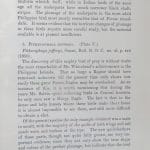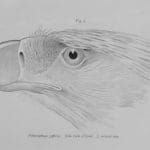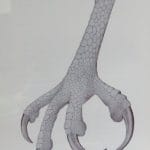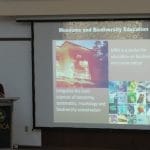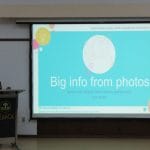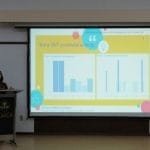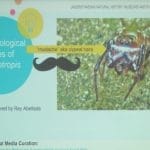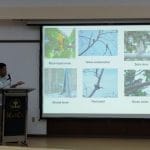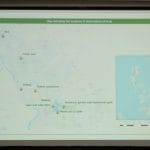Daydreaming Biologist*
CLADES 2017 The First Culture+Learning, Art+Design, Environment+Science Summit
By Nikdye Realubit
What is a clade? A clade is a group of organisms (descendants) believed to have evolved from a common ancestor, representing a branch from the Tree of Life. For example, we know that the parrots, the Colasisi and the Katala are more related to each other than say the Philippine Eagle. Speaking of raptors, it is a general term that is used to refer to birds of prey. Though it is true that hawks/eagles/Accipiters/harriers/kites are closely related to each other, owls are of a different clade. It is no wonder that CLADES was used as an acronym for the first ever Philippine Natural History Museums and Collections Summit. The acronym CLADES stands for Culture+Learning, Art+Design, Environment+Science. The summit was held on September 27-28, 2017 at the SEAMEO-SEARCA, University of the Philippines Los Banos, College, Laguna.
Remember Mike Lu’s impetus for why the bird club was established? It was somewhere around the question, “why are scientists not telling their fellow citizens how unique Philippine biodiversity is?” As an overburdened mid-career scientist, I could count the ways of how a person buried in proper science will not be able to even think about promoting his/her work out there in a layman manner. I could also cop out by saying that scientists ARE different from conservationists, and it’s the task of the conservationist to raise awareness of Philippine biodiversity to the minds of the public. But actually, if you think about it, scientists have been trying to put the knowledge of biodiversity out there for quite a while now.
Summit highlights
There was an exhibit soft launch in the main conference room entitled, “Haring Ibon: A Past Revisited Historic Descriptions of Pithecophaga jefferyi from 1896 and 1910”. It was a lovely read to learn how the Philippine Eagle was discovered. The discovery of the Philippine Eagle was considered to be the most remarkable achievement of Joshua Whitehead in the Philippines. Joshua Whitehead was the young British ornithologist that arrived to Samar for a field expedition. Incidentally, if you’re curious who Jeffery really is, he is the father of Joshua Whitehead. The Philippine Eagle was seen daily across their camp, flying overhead. Of course, Samar locals were familiar with the bird and shared their observation of the bird’s favorite prey – the monkeys, which bring us to thequite memorable moniker Monkey-eating Eagle. Aside from the sheer size, the depth of the bill is generally bigger than most raptors and has almost a resemblance to cockatoo bills. Another unique character was the naked legs and feet, where raptors usually have feathers on these parts. After the Samar expedition, the species was heard to occur in Leyte and was also found in Luzon.
The late discovery of very big and distinct bird at that time is a testament to the huge tracts of forest present in the Philippines at that time. At present time, Samar still has a considerable forest area only because there is less everywhere else. Just in case you are interested, Ogilvie-Grant the scientist who originally wrote the species description for the Philippines Eagle also wrote that of the Isabela Oriole and many other Philippine species. The “recent” Calayan Rail discovery by WBCP member Dr. Carmela Española is also a testimony to how rich and hidden Philippine biodiversity is. The exhibit’s final location will be at the UPLB-Museum of Natural History.
An example of environmental education was described by the presentation of UPLB-MNH’s James Alvarez who tackled “Museum Educational Programs Learnings, Challenges and Opportunities”. With the presentation theme of “Bringing Nature closer to the people and the people closer to Nature” he shared the ways that UPLB-MNH have been doing for the past forty years to share the uniqueness and diversity of Philippine biodiversity. MNH is a center for education on biodiversity and conservation by integrating the basic sciences of taxonomy, systematics, museology, and biodiversity conservation. Biodiversity seminars are held on a weekly basis at the museum. Museum staff can also be invited to have talks by different organizations. The ROX talk by MNH Director and WBCP member by Dr. Juan Carlos Gonzalez. Workshops are also being consistently held onsite, the most recent being their basic photography workshop. Their challenges include development of new platforms for sharing information and improved facilities to encourage volunteers. Opportunities cited from their end include partnership with universities and collaboration with government offices and non government organization. Although no formal agreements have been drafted, Wild Bird Club of the Philippines has benefited from the relationship with MNH in that Dr. Gonzalez is a volunteer member of the Records Committee and has been a lecturer for the Philippine Bird Festival for the past five years.
Aside from traditional curation and museum events, due to the increasing popularity of social media platforms specimen identification is even more than the seemingly dry work of specimen work. Entitled “On Social Media Curation: Straight from the Philippine Arachnophiles Capture Spiral Web”, as presented by MNH curator Dr. Aimee Lynn A. Barrion-Dupo, WBCP member Lydia Robledo & the Philippine Arachnophiles Group, spider identification through Facebook is now the common ground of people from all walks of life. It is a 24/7 curatorial work as there are members from different time zones. The mutual love for spiders is nurtured in the careful encouragement of newbies by mindful explanation of diagnostic characters and how shows such characters in a photo. As the adage goes, “a picture is worth more than a thousand words” new information is surfacing on the natural history of the spiders.
Sounds familiar? With the growth of the Club and other splinter groups the current journey of Philippine Arachnophiles Group is akin to where we started X years ago. It just goes to show that with mutual interest for any group of species, a responsible and respectful platform it’s not just member enjoyment in the thrill of chase and correct identification that is realized, science and conservation also benefits.
Ëntitled “The University as a Bird Sanctuary: Developing a Living Natural History for Conservation and Education” the presentation by Professor Marion Pareja of De La Salle University – Dasmariñas showcases their school campus as a natural habitat of bird species. Their strategy was to engage millenials in some much needed nature appreciation in a familiar setting. Armed with Smart mapping, bird observations were pinpointed in different locations. After a species list and a mapped bird distribution, they now have the opportunity to share their findings for the awareness of a bigger population. This kind of endeavor is of course no surprise, with the Club’s favorite place to fledge birdwatchers is the UP Diliman campus where the familiarity of common species is peppered with sporadic twitchable bird encounters.
My last highlight reminds me of the elementary school battle cry that got drilled in each and every pupil, “the Philippines is very rich in natural resources”. We would spend hours memorizing names of land and water forms: bundok, burol, kapatagan, dagat, lawa, talon, ilog. If there was time, the teacher would ask us to incorporate it in Save the Earthposters artworks where we used all the brown, blue and green poster paints with a hand cradling a seedling planted on Earth. What’s funny is that there was no mention of the living inhabitants of these areas and gubat was a picture we painted with brown straight lines and green blobs on top. As a birdwatcher I’ve always focused on the species, I keep forgetting that these birds are our living actors set on the background of wonderful ecosystems, when taken together forms the whole of our natural heritage.
It’s easy to get lost in bird lists and lifers, in the battle to get that twitch, the struggle to overcome logistic fails, and the search for the right companions for an extended birding trip but we must not forget that we are not alone. We may have our way of different way of doing things and have drawn different lines on the sand, but we must remember that it is OUR collective natural heritage. In the same way that an ecosystem-specialized species will not survive alone, collaboration is the key to moving forward in bringing our advocacy of biodiversity appreciation and conservation to a wider audience to build a critical mass that will demand that Philippines be taken care of, for everyone’s enjoyment and the survival of the Philippines’ future generation.
For more information about the CLADES 2017 Summit please visit: https://sites.google.com/up.edu.ph/clades
________________________________________________________________________________



